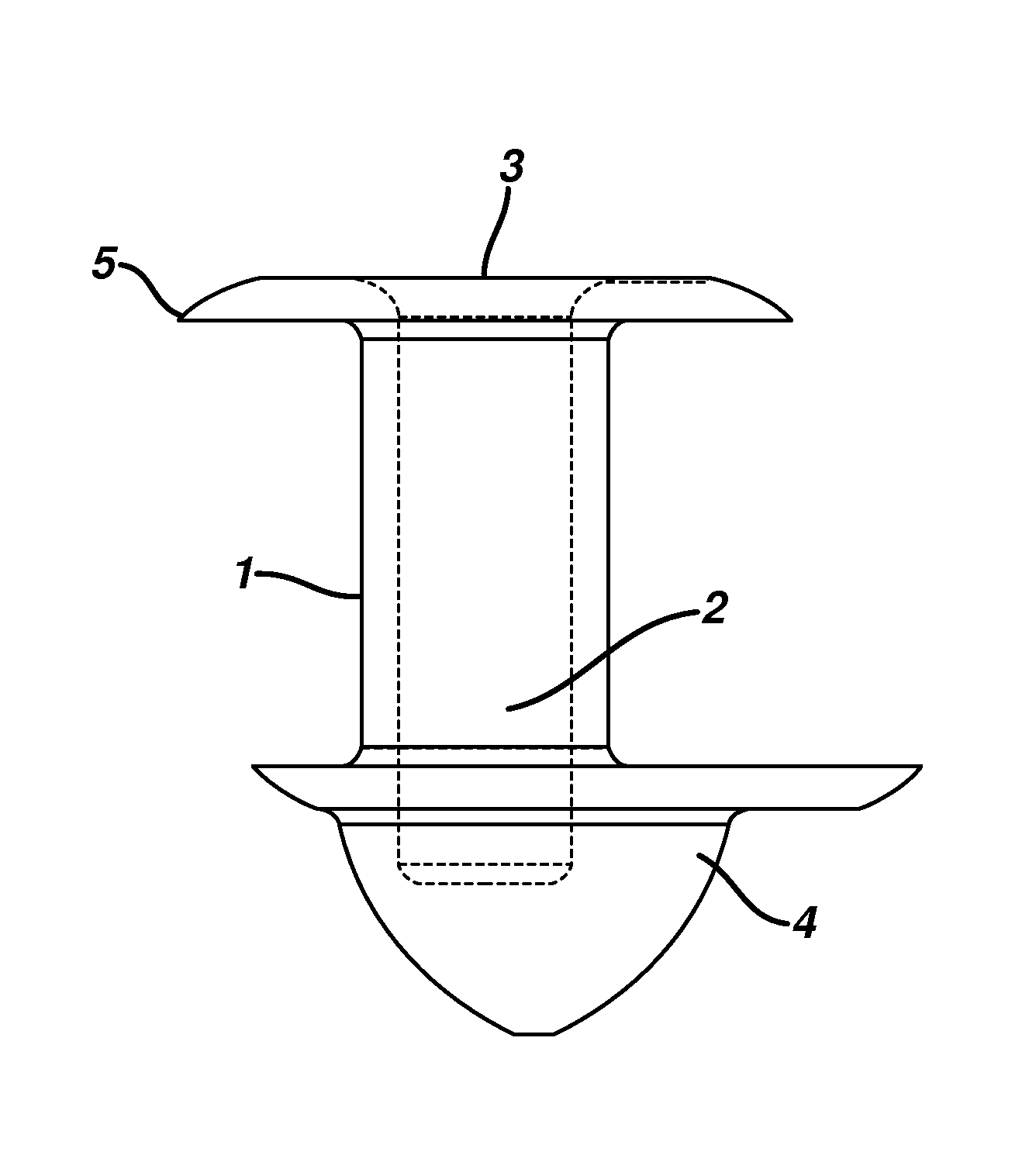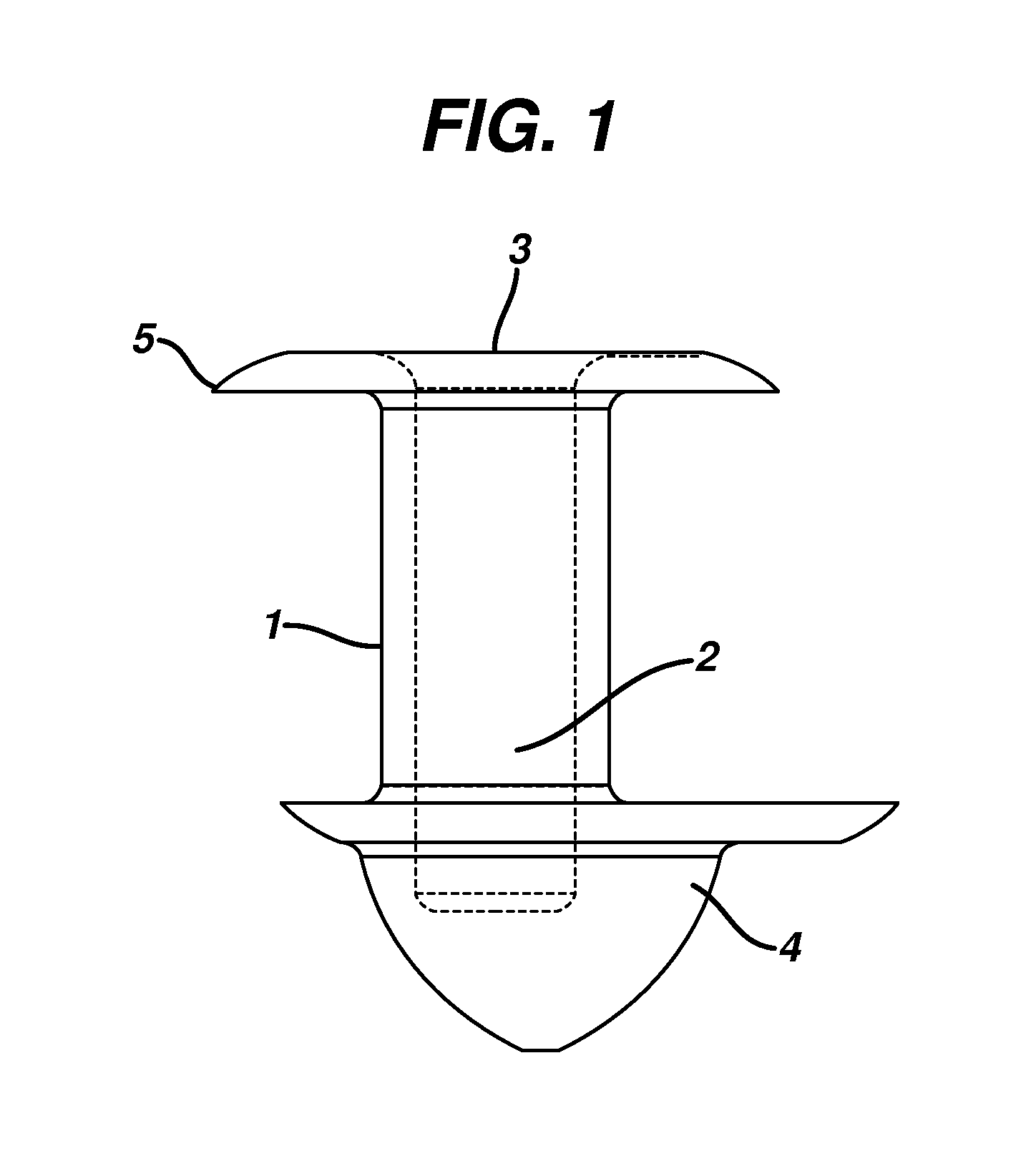Punctal plugs
a technology of plugs and plugs, applied in the field of punctal plugs, can solve the problems of ineffectiveness, bleeding or perforation of the globe, ineffectiveness for some applications, and a large amount of drop
- Summary
- Abstract
- Description
- Claims
- Application Information
AI Technical Summary
Benefits of technology
Problems solved by technology
Method used
Image
Examples
example 1
[0064]0.35 to 0.75 mg of a 2 part silicone rubber mixture with crosslinkers and catalyst obtained from Wacker Silicones, Adrian, Mich., were injected molded to form a punctal plug as shown in FIG. 2 The dimensions of the plug were as follows: the total length was 1.85 mm, the length of body 1.00 mm, diameter or radius of both the flange and arrowhead was 1.2 mm, the amount of offset from central axis was between 5 to 15 μm, there were between 2 to 5 threads with a bore diameter of about 0.4 mm.
[0065]Insertion and removal forces are summarized in Table 1:
[0066]
TABLE 1CorkyConeheadInsertion Force (N)0.220.18Time (sec)89Removal Force (N)0.170.12Time (sec)1417
PUM
 Login to View More
Login to View More Abstract
Description
Claims
Application Information
 Login to View More
Login to View More - R&D
- Intellectual Property
- Life Sciences
- Materials
- Tech Scout
- Unparalleled Data Quality
- Higher Quality Content
- 60% Fewer Hallucinations
Browse by: Latest US Patents, China's latest patents, Technical Efficacy Thesaurus, Application Domain, Technology Topic, Popular Technical Reports.
© 2025 PatSnap. All rights reserved.Legal|Privacy policy|Modern Slavery Act Transparency Statement|Sitemap|About US| Contact US: help@patsnap.com



